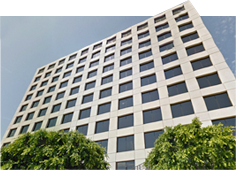The “Particular Social Group” Standard in U.S. Asylum Cases – An Evolving Definition
In order to be granted asylum in the United States, an applicant must demonstrate that he or she is unwilling or unable to return to his or her home country because of past persecution or a “well-founded fear” of persecution on account of race, religion, nationality, political opinion or membership in a particular social group.
Whereas defining an asylum seeker by race, religion, nationality or political opinion is relatively straightforward, evaluating membership in a “particular social group” (PSG) involves a more obtuse standard.
The United Nations Human Rights Commission, which is the commission that oversees the international refugee program for all of the participating countries, has released guidelines that define “particular social group” as:
- a group of persons who share a common characteristic other than their risk of being persecuted, or who are perceived as a group by society. The characteristic will often be one which is innate, unchangeable, or which is otherwise fundamental to identity, conscience or the exercise of human rights. (UNHCR, Guidelines on International Protection: “Membership of a Particular Social Group” Within the Context of Article 1A(2) of the 1951 Convention and/or its 1967 Protocol Relating to the Status of Refugees (2002) at ¶11 (emphasis added).
American jurisprudence has taken a much narrower view as to what defines a particular social group or how an applicant can establish that he or she is a member of such a group. The Board of Immigration Appeals (BIA) in Matter of Acosta defined members of a particular social group as persons who hold a “common, immutable characteristic” which may be “an innate one such as sex, color, kinship ties, or in some circumstances…a shared past experience such as former military leadership or land ownership.” Matter of Acosta, 19 I&N Dec. 211, 233-34 (BIA 1985). The characteristic must be one “that the group either cannot change, or should not be required to change because it is fundamental to their individual identities or consciences.” Id.
In 2008, the BIA added two new requirements to the test for Particular Social Group. The BIA held that, in addition to possessing an immutable characteristic, a group must also be socially visible and also be particularly defined. The BIA explained that “particularity” meant that a group could be defined in a manner sufficiently distinct that the group would be recognized, in the society in question, as a discrete class of persons. Matter of S-E-G-, 24 I&N Dec. 579, 584 (BIA 2008). To meet the particularity requirement, a group must not be “too amorphous . . . to create a benchmark for determining group membership,” Id.
From the outset, the “social visibility” prong caused much confusion, forcing the U.S. Courts of Appeals to weigh in on the definition. Some Circuits rejected the additional prong of “social visibility” altogether, see Gatimi, 578 F.3d at 616 (finding that the social visibility requirement “makes no sense” and that the BIA has never attempted “to explain the reasoning behind the criterion of social visibility”) and Valdiviezo-Galdamez v. Holder, 663 F.3d 582, 608 (3d Cir. 2011) (noting that the requirement of particularity and social visibility are indiscernible)
The Ninth Circuit, in Henriquez-Rivas v. Holder, 707 F.3d 1081, 1080-90 (9th Cir. 2013), adhered to the two prong approach, but confusingly noted that the group may be perceived as a group by the society in question, but that the perception of the persecutor could suffice instead to satisfy the social visibility prong. This interpretation essentially opens up the possibility that, so long as a persecutor considers his victim to be part of a group, then whether society recognizes such a group is of no consequence.
In 2014, the BIA attempted to clarify that the “social visibility” prong should not be interpreted to require ocular visibility, but instead should refer to whether the particular social group is recognized within society as a distinct entity. Matter of M-E-V-G-, 26 I&N Dec. 227 (BIA 2014) and Matter of W-G-R-, 26 I&N Dec. 20 (BIA 2014). Thus, the BIA renamed the “social visibility” prong “social distinction.”
As one might imagine, seeking to define a group as, but failing to establish that it is distinct, can lead to absurd results. Not to mention that, in the 9th Circuit, an adjudicator must somehow figure out not only whether a society considers a group to be both particular and distinct, but—absent such evidence—also whether an individual persecutor in fact perceived a group as such.
What has resulted as a consequence of the BIA somewhat arbitrary and inexplicable parameters of what constitutes a particular social group is the denial of many children, women and men who have sought refuge in the United States for the purposes afforded them under international refugee law, simply because they are incapable of sufficiently defining their particular social group.
The Third Circuit poignantly described the current state of the PSG analysis in Valdiviezo-Galdamez v. Holder, 663 F.3d 582, 608 (3d Cir. 2011) when it stated:
- [W]e are hard-pressed to discern any difference between the requirement of “particularity” and the discredited requirement of “social visibility.” Indeed, they appear to be different articulations of the same concept and the government’s attempt to distinguish the two oscillates between confusion and obfuscation, while at times both confusing and obfuscating. Indeed, “Particularity” appears to be little more than a reworked definition of “social visibility” and the former suffers from the same infirmity as the latter.
It is hard to imagine how a refugee—who often may suffer from post traumatic stress disorder or who, in many cases, is a young child—is able to articulate the difference between particularity and social distinction when the legal scholars who preside over our immigration and federal circuits courts are sometimes at odds in doing so.






